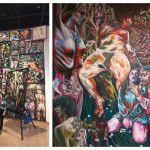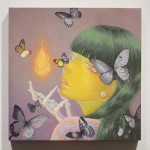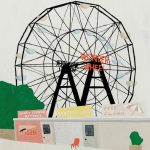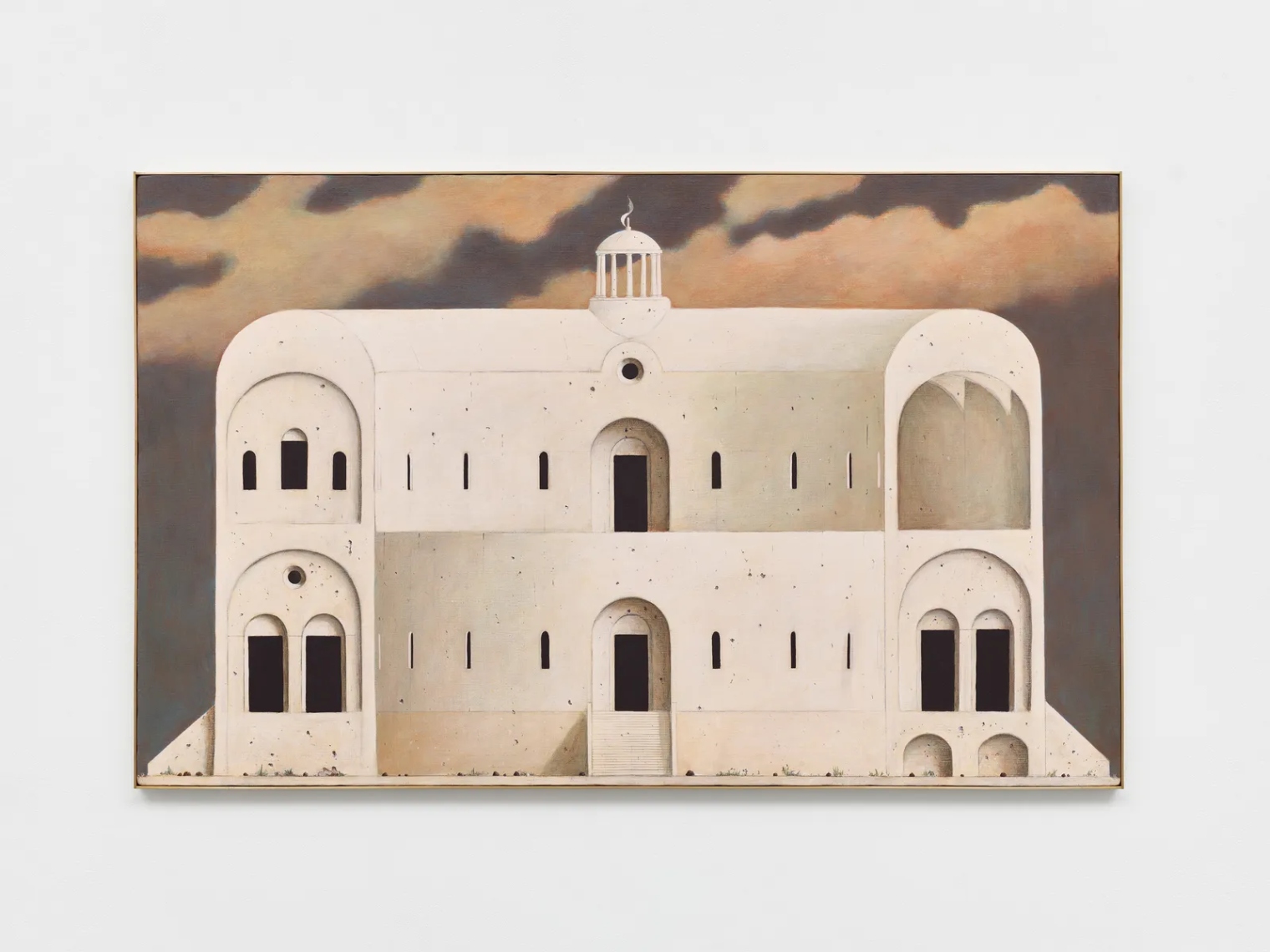
Still-28 1986
Painting is an escapist world, but I would like it to be a place to become energized
Minoru Nomata
Over the past four decades, Minoru Nomata has developed a distinctive painting style characterized by imaginary architectonic and topographical forms. His works transcend specific time and place, marked by a lack of human presence. He combines the familiar with the mysterious, creating visionary paintings that are both heroic and haunting.
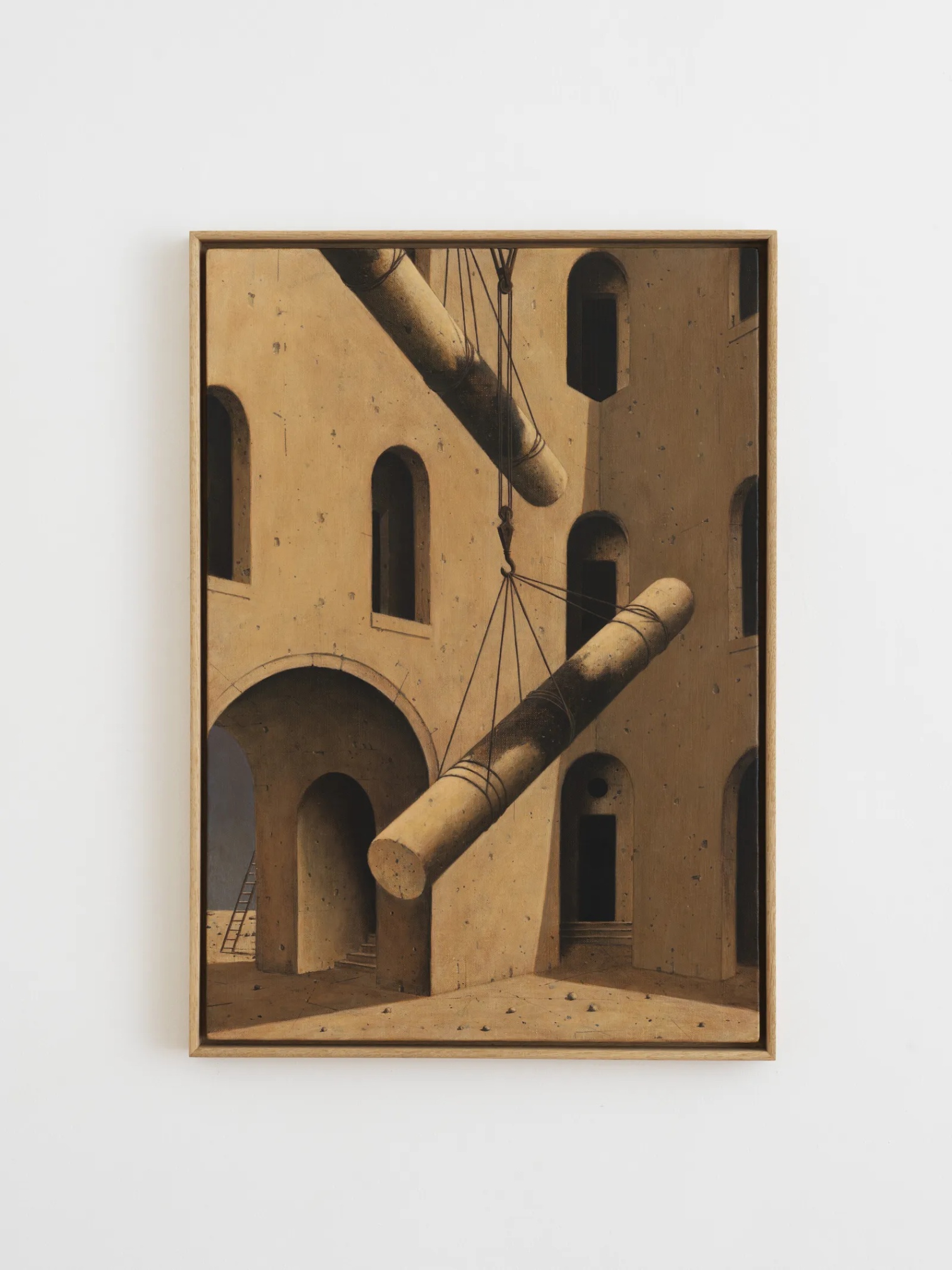
Arcadia-14 1988
Early exhibitions in 1986 at the Sagacho Exhibit Space showcased his exploration of Greek and Roman architecture and classical ruins. The ‘Decors’ series in 1987, for instance, presented architectural structures against a backdrop of sky, creating a stage-like scene with implied narratives.
Nomata’s style is influenced by various artistic references, including Magritte, de Chirico, Henri Rousseau, and Charles Sheeler. His early work employs a predominantly neutral palette with abrupt changes in scale and neo-classical motifs. The visual language involves structural elements like beams, tarpaulins, netting, and scaffolding, drawing upon his upbringing in an industrial area of Tokyo.
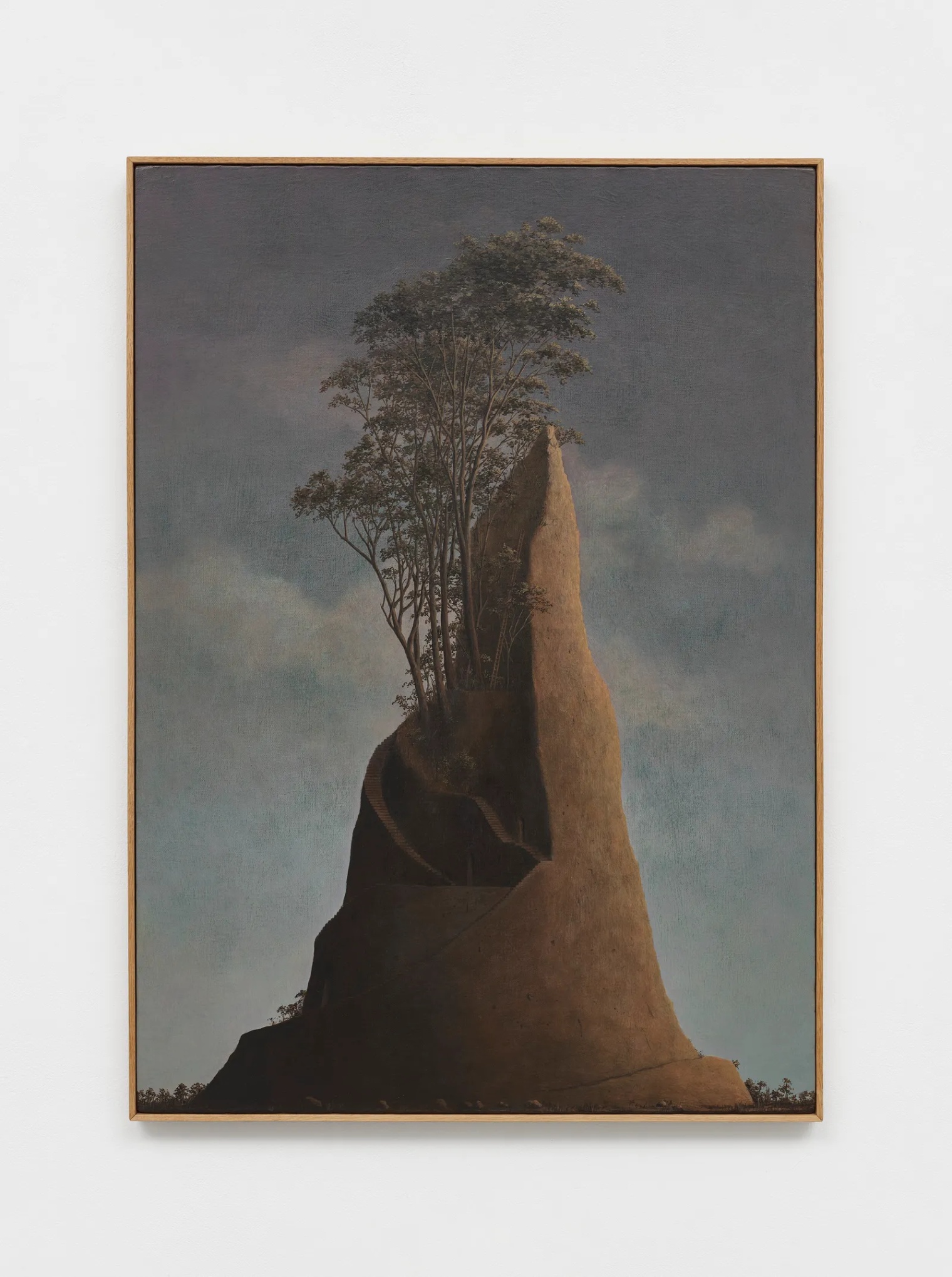
Bourou-3 1995
In the 1990s, Nomata introduced wind turbines and greenhouses, exploring themes of construction, ruin, and the interplay between the manmade and the natural. The ‘Bourou’ series, influenced by family illness, features topographical earthen forms, while the ‘Windscape/Perspective’ series focuses on atmosphere and movement.
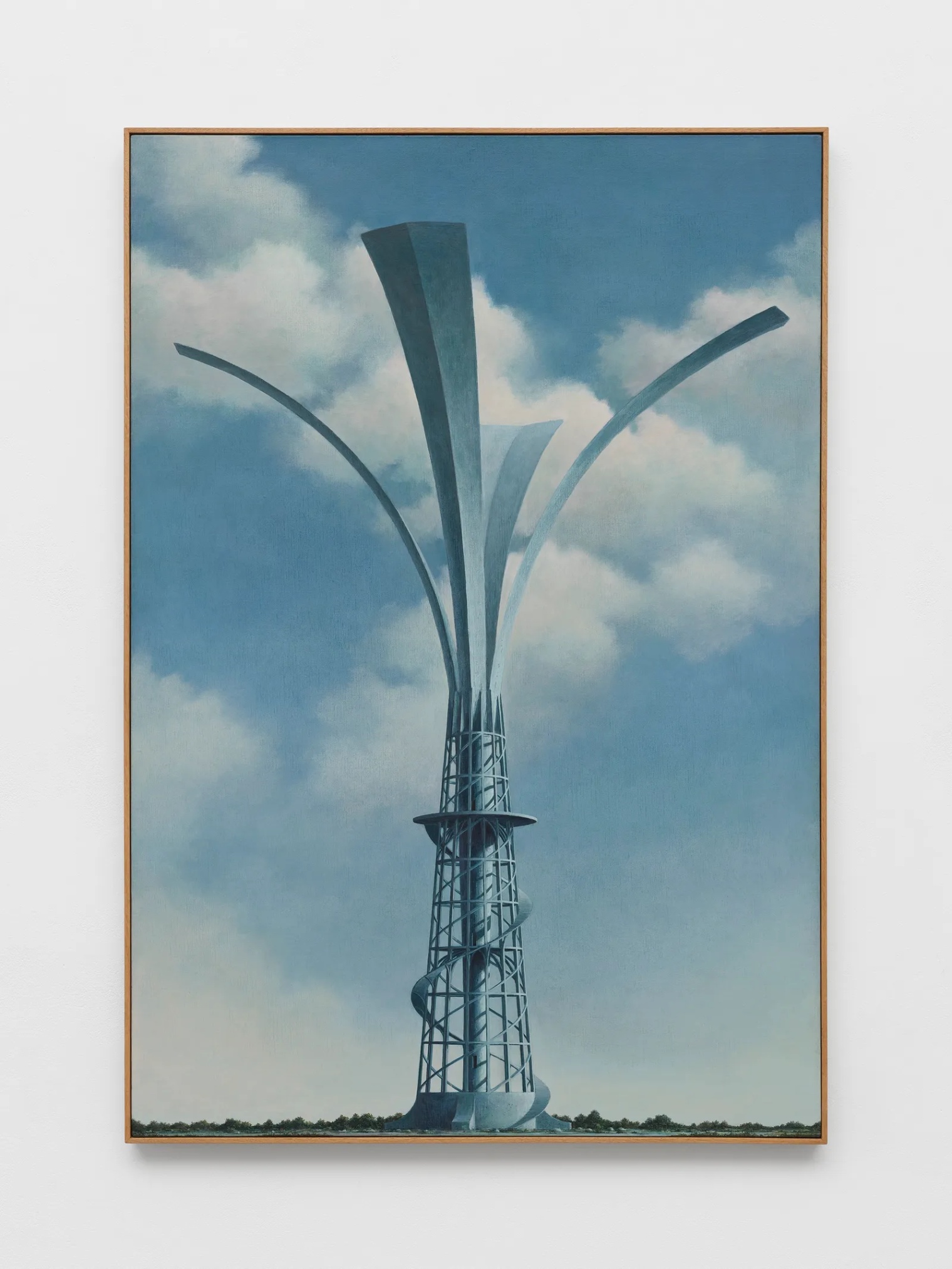
Windscape-2 1997
His later works in the 2000s, like the ‘Light Structures’ and ‘Skyglow’ paintings, delve into socio-ecologic concerns, highlighting the overabundance of electric light in urban environments. These compositions feature illuminated high-rises enveloped in darkness, drawing inspiration from Eugene Jansson’s night paintings and the Tower of Babel, reflecting urban ambivalence and addressing the climate crisis.
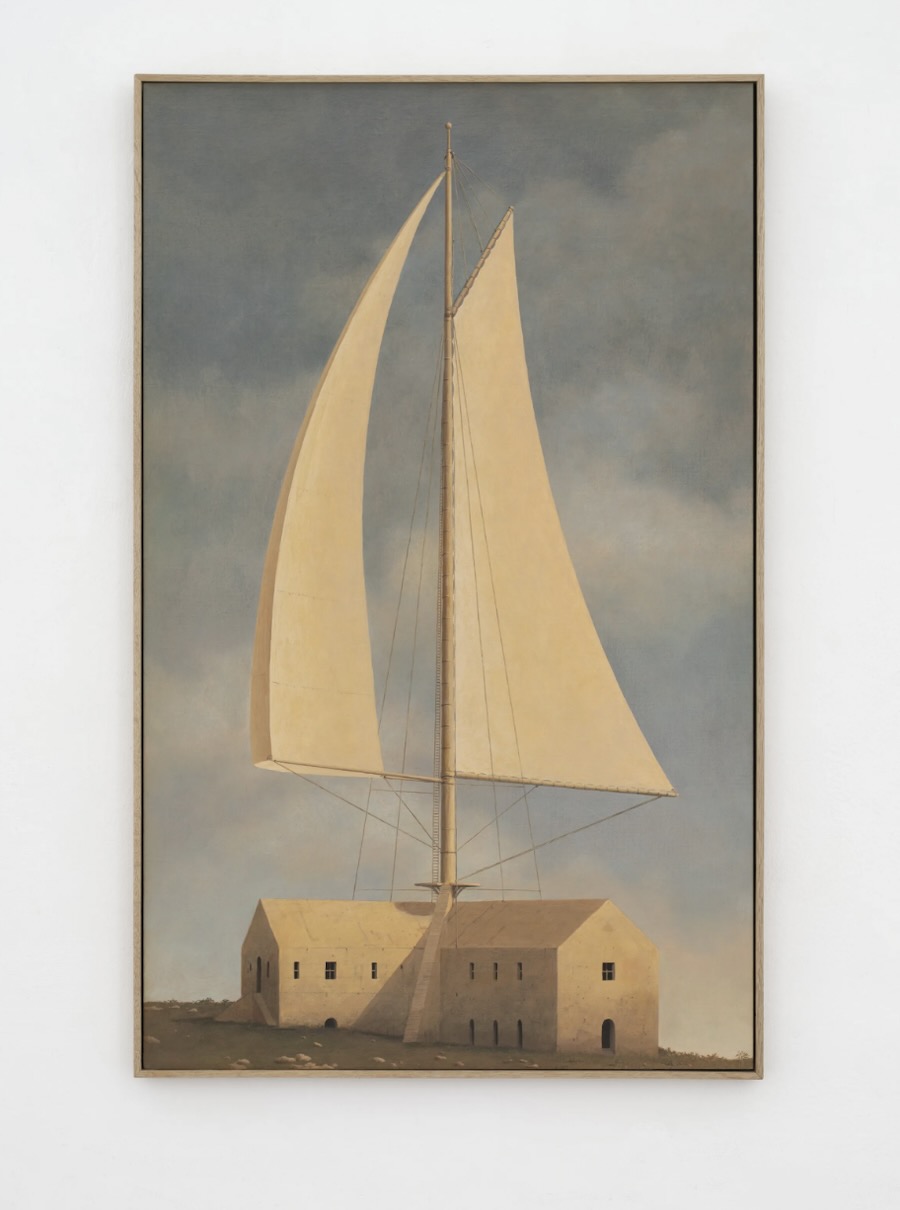
Forthcoming Places-6, 1996
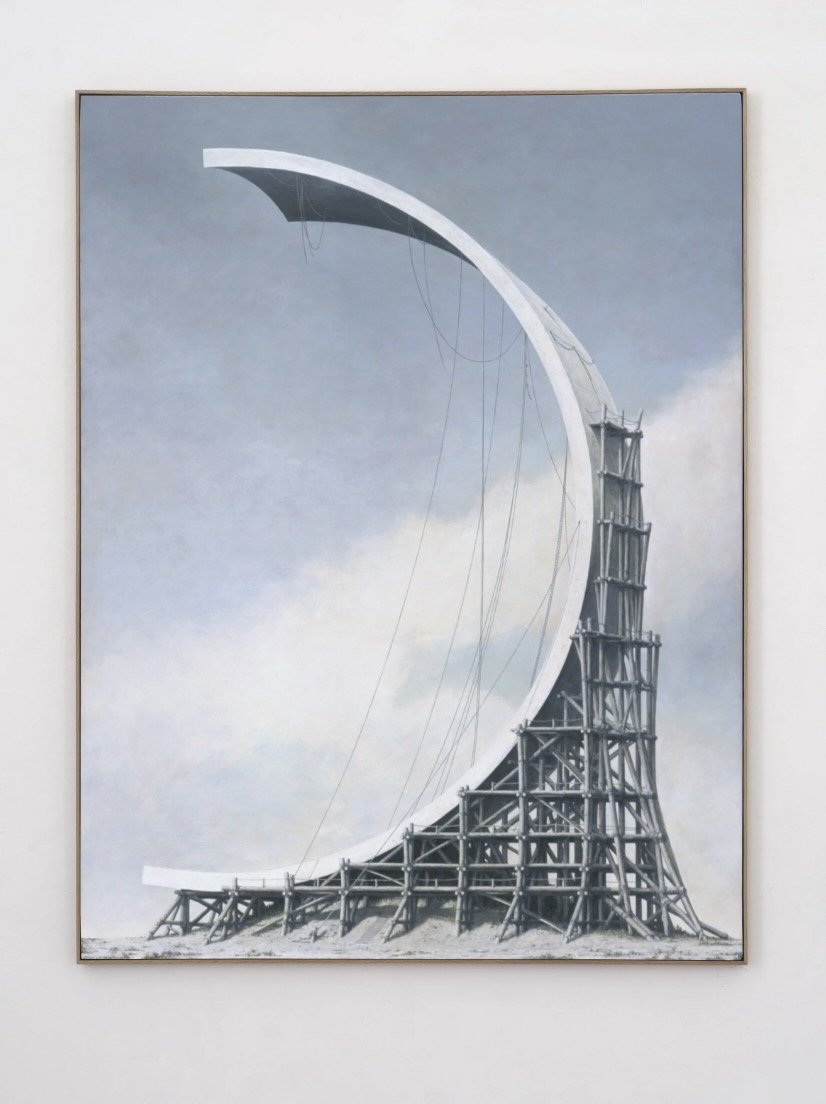
Points of View-31, 2004
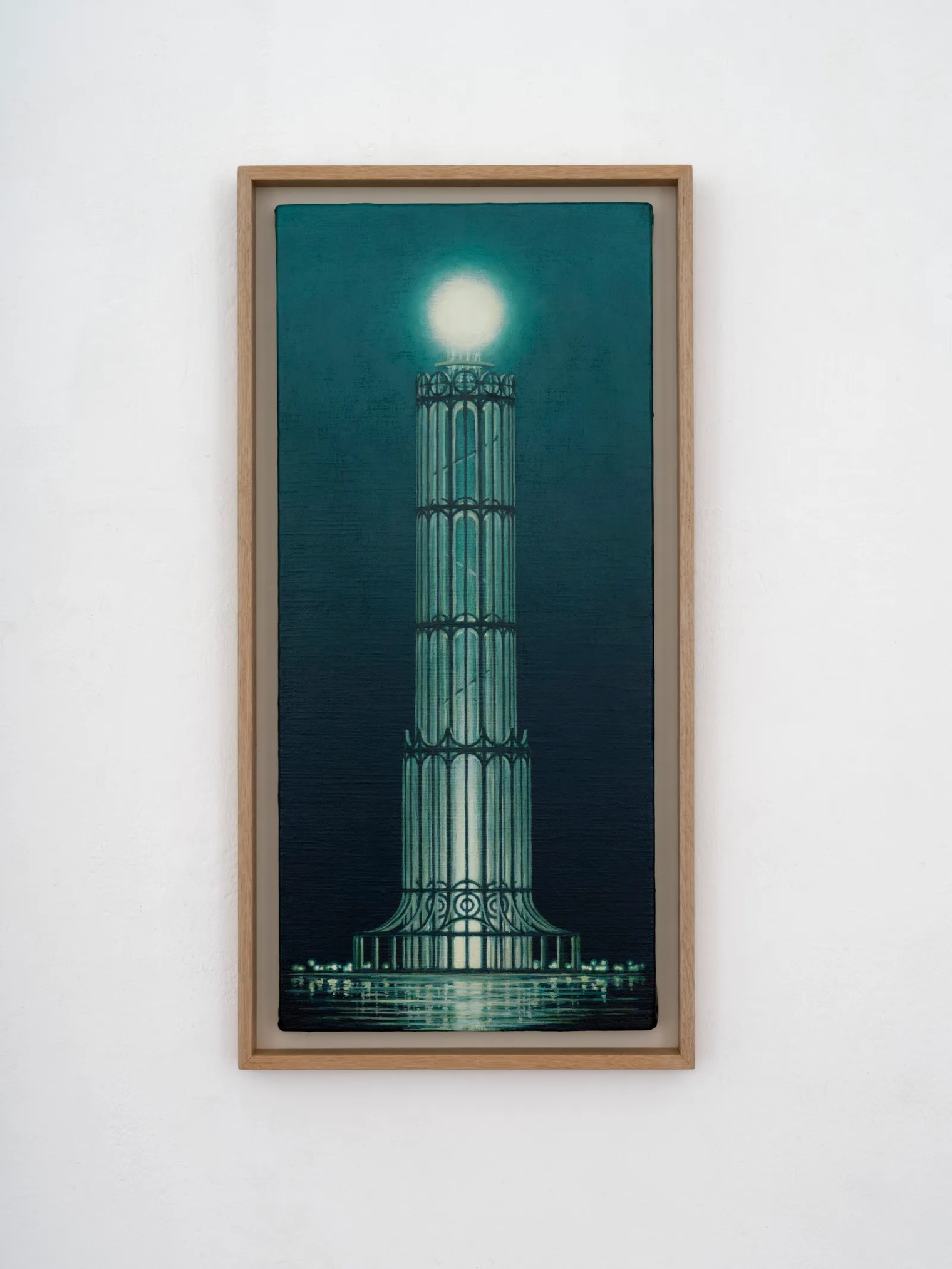
Light Structures-11 2007
Nomata’s structures become increasingly fragile, pointing to human vulnerability. Nomata’s recent paintings exhibit reduced material volume, greater height, and verdant canopies. Scaffolding wraps protect these structures, emphasizing human vulnerability and Windmills address the growing crisis of climate change.
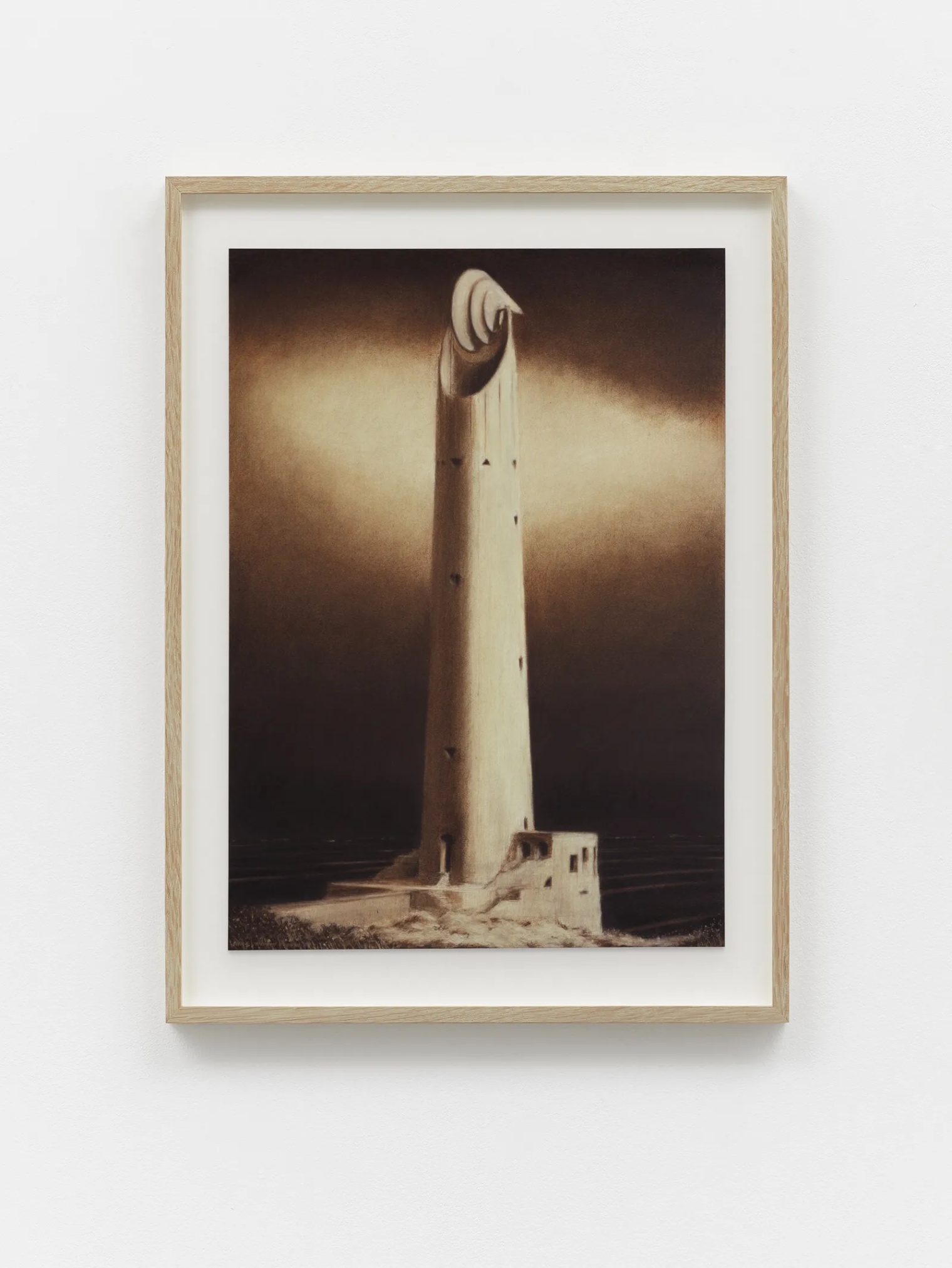
Far Sights-4 2009
Nomata’s visionary exploration of architectural forms, from the classical to the contemporary, seamlessly intertwines themes of human vulnerability, urban ambivalence, and the pressing crisis of climate change. His unique blend of imagination and reality in his works not only leaves a lasting impact on the viewer but also serves as a poignant reflection on the complexities of our ever-changing world, inviting contemplation and dialogue for generations to come.
Nomata’s work is currently on display at White Cube Gallery in Seoul through March 2, 2024.
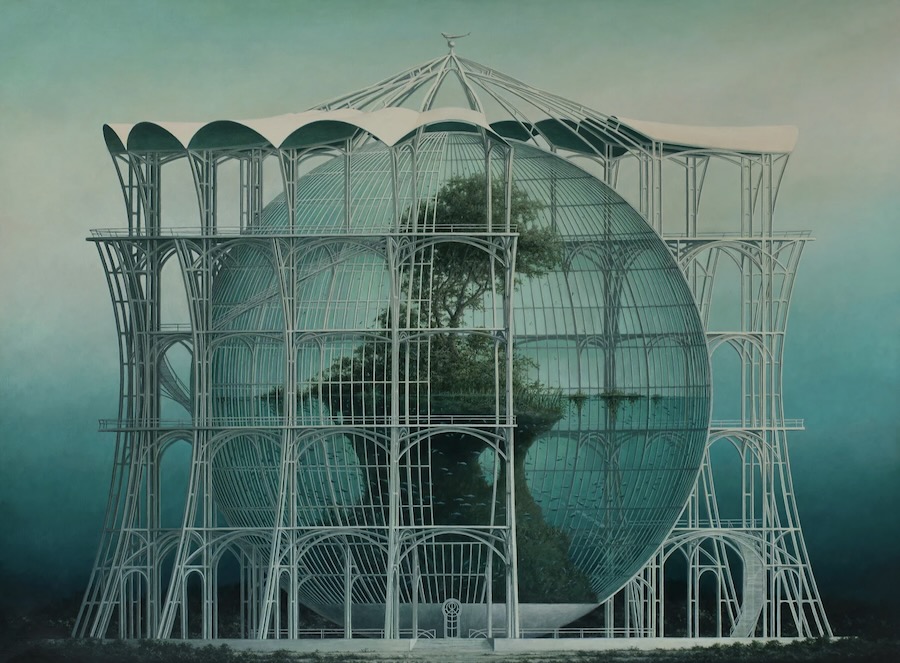
Alternative Sights-2, 2010
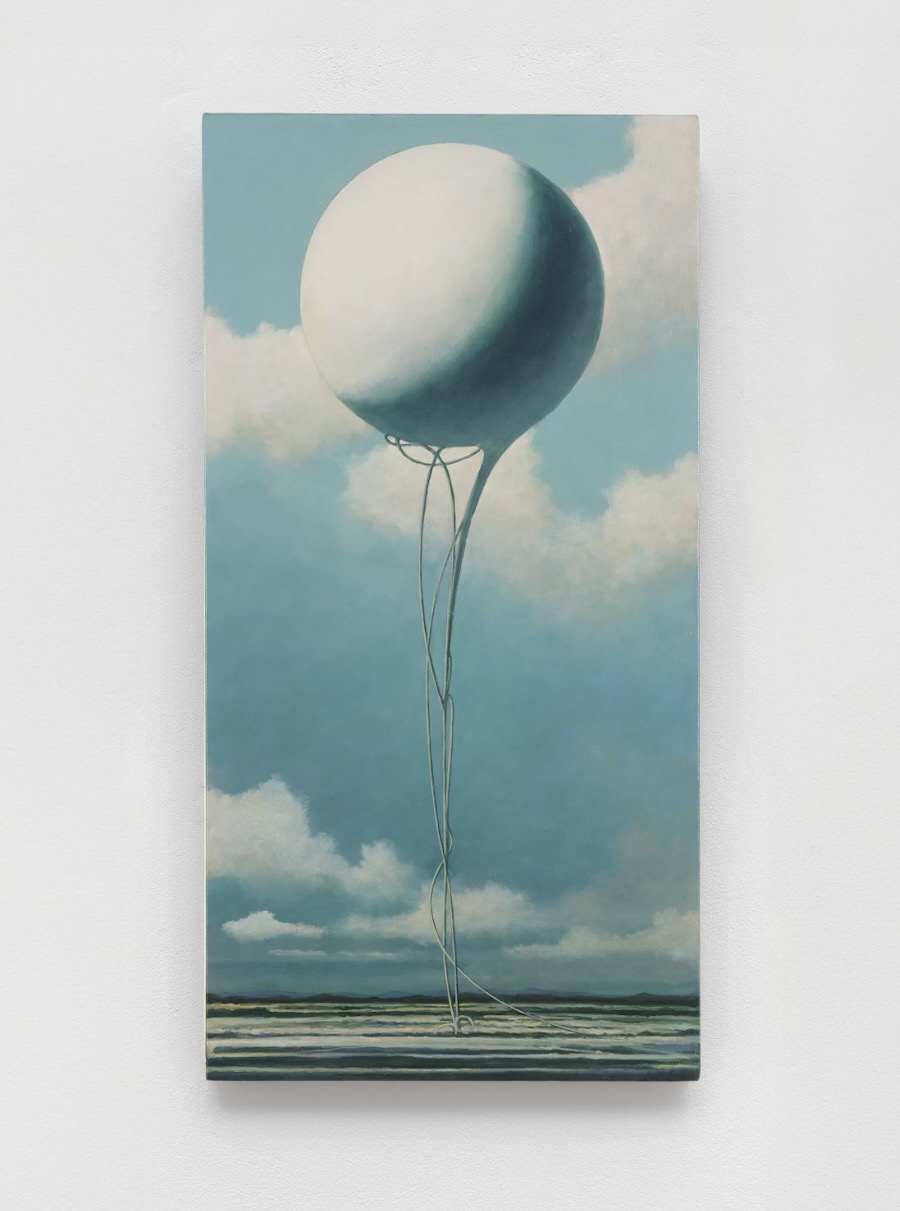
ascending descending-8, 2018
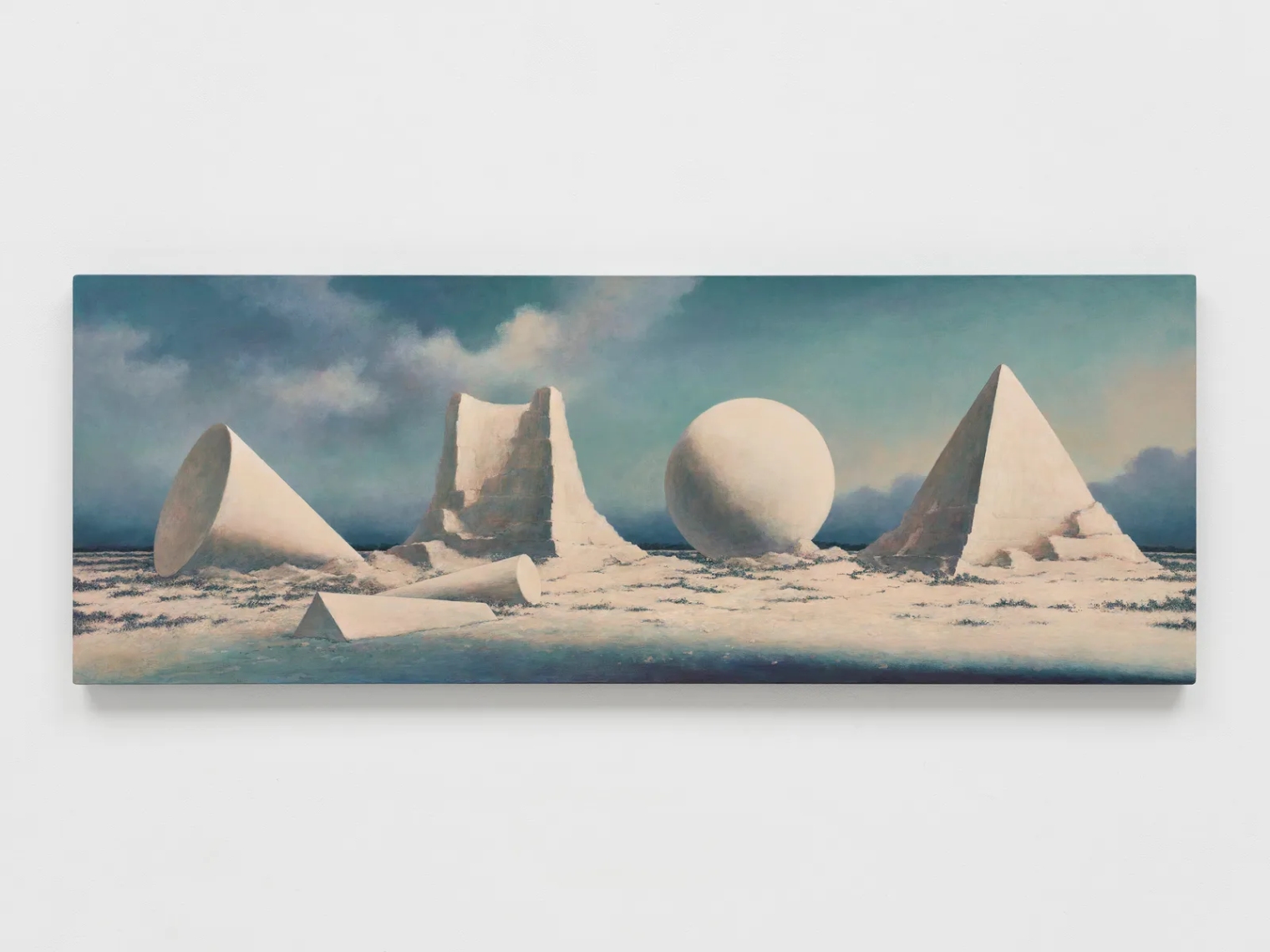
Gekka-4 2022


